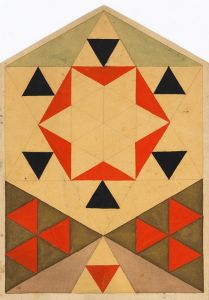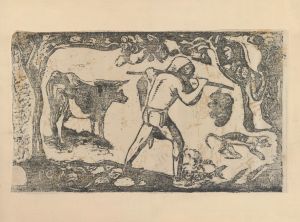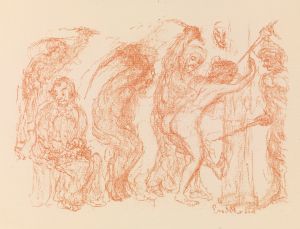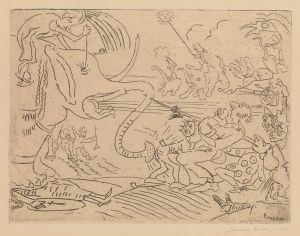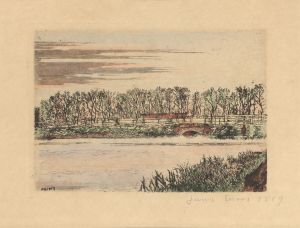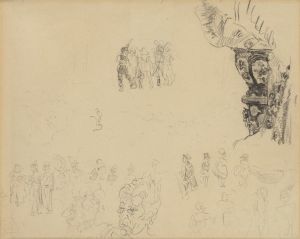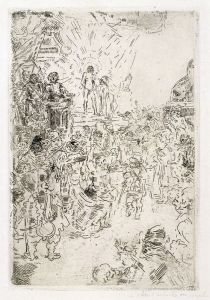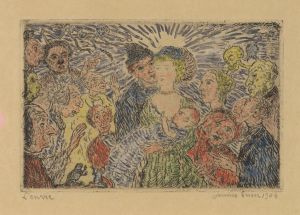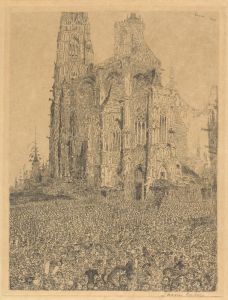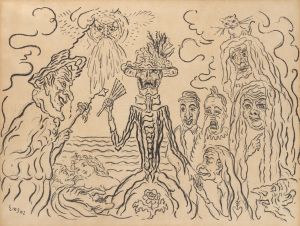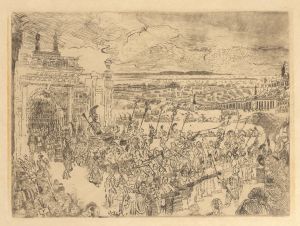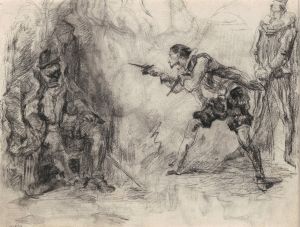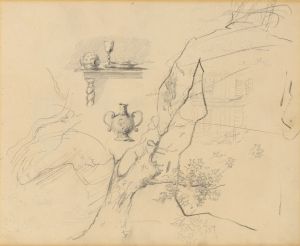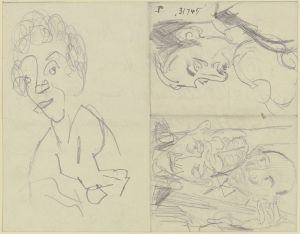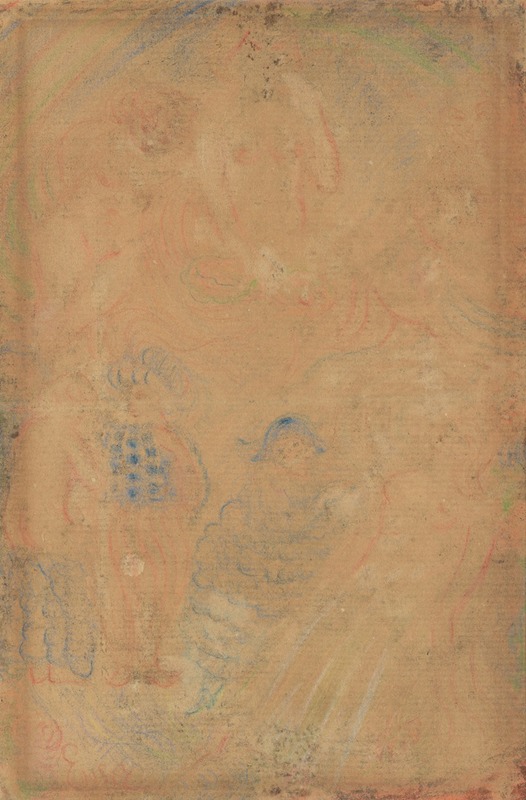
Naakten en harlekijnen
A hand-painted replica of James Ensor’s masterpiece Naakten en harlekijnen, meticulously crafted by professional artists to capture the true essence of the original. Each piece is created with museum-quality canvas and rare mineral pigments, carefully painted by experienced artists with delicate brushstrokes and rich, layered colors to perfectly recreate the texture of the original artwork. Unlike machine-printed reproductions, this hand-painted version brings the painting to life, infused with the artist’s emotions and skill in every stroke. Whether for personal collection or home decoration, it instantly elevates the artistic atmosphere of any space.
James Ensor was a Belgian painter and printmaker, known for his innovative and often controversial works that played a significant role in the development of Expressionism and Surrealism. One of his notable works is "Naakten en harlekijnen" (translated as "Nudes and Harlequins"). However, detailed information about this specific painting is limited, and it is not as widely discussed or documented as some of his other works like "The Entry of Christ into Brussels in 1889."
Ensor was born in 1860 in Ostend, Belgium, and spent most of his life there. He was part of the avant-garde group Les XX, which was instrumental in promoting modern art in Belgium. His work is characterized by its bold use of color, grotesque imagery, and a fascination with masks and skeletons, often reflecting themes of death, satire, and the absurdity of human existence.
"Naakten en harlekijnen" likely fits within Ensor's broader thematic interests, as he frequently depicted figures in masks and costumes, exploring the tension between appearance and reality. Harlequins, in particular, are a recurring motif in Ensor's work, symbolizing the theatricality of life and the masks people wear in society. The inclusion of nudes could suggest a juxtaposition between vulnerability and disguise, a common theme in Ensor's exploration of human nature.
Ensor's style is marked by a departure from traditional realism, employing exaggerated forms and vibrant colors to convey emotion and critique societal norms. His work often includes elements of satire and social commentary, challenging the viewer to question the status quo and reflect on the deeper meanings behind the imagery.
Despite the lack of specific information on "Naakten en harlekijnen," it can be contextualized within Ensor's broader oeuvre. His paintings often provoke thought and elicit strong reactions, as he was unafraid to tackle controversial subjects and push the boundaries of conventional art. Ensor's influence is evident in the works of later artists, and his legacy is celebrated in museums and collections worldwide.
In summary, while detailed information on "Naakten en harlekijnen" is scarce, it is likely representative of James Ensor's distinctive style and thematic concerns. His work continues to be studied and appreciated for its originality, emotional depth, and its role in shaping modern art movements.





